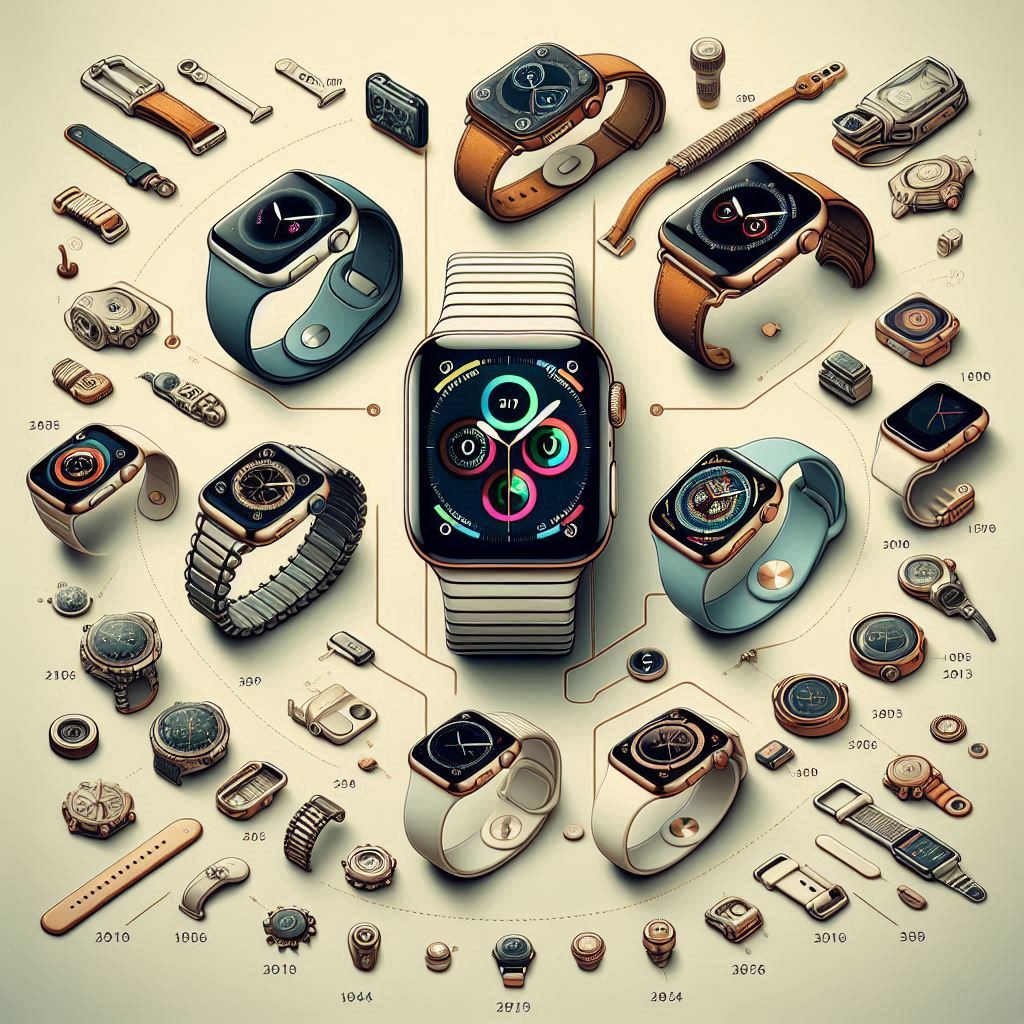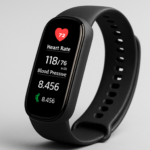It’s rare for a name to loom as large in the smartwatch world as the Apple Watch does. Apple made its entry into the wearable tech market, and enthusiasts and skeptics alike sat on the edge of their seats waiting for the brand to redefine the entire category of smartwatches. The first Apple Watch not only added to Apple’s collection of products; it also changed how people interacted with the technology they were wearing on their wrists. This article walks through the coming of the first Apple Watch with its set of features and legacy, giving a peek at how it paved the way for all the powerful wearables people use today.

The Launch of the First Apple Watch
This was the first Apple Watch release, which was announced on September 9, 2014, by Apple along with the iPhone 6 and 6 Plus. It hadn’t gone on sale until April 24, 2015. Apple introduced three collections at launch: the Apple Watch, the Apple Watch Sport, and the luxury Apple Watch Edition, made from 18-karat gold.
It was thus Apple’s first big product category introduction since iPad in 2010. Tim Cook, chief executive officer of Apple, put the weightage of the watch being used as a very personal and immediate way of keeping in touch and organizing the daily routine. Configuration of combining communication, health, and fitness was executed in a very sleek and customizable form factor using the innovative Apple Watch.
Key Features of the First Apple Watch
First edition Apple watch had new and advanced features by far ahead of other smart watches in the market:
- Design and Display: The watch had a square-shaped Retina display with the concept of Force Touch to give one a reaction as interaction – as if it understands the user.
- Digital Crown and Taptic Engine: Digital Crown was a navigation option without blocking up the screen. It had a Taptic Engine to give an almost invisible vibration.
- Health and Fitness Tracks: Heart rate monitoring, daily activity tracking, and prompting for completing all activity rings.
- App Ecosystem: To join up with third party apps to get notifications, calls, and messages.
But it could be said that all these features would remain magnificent in the air as this first issue of the Apple Watch is without GPS. Users have to depend upon an iPhone connection to view or have accurate measurement of their distance and location.
Was It Waterproof?
One of the most asked questions regarding the original Apple Watch was: Is it waterproof? The first Apple Watch was indeed splash and water resistant, but it was never fully waterproof. Apple advised against using the watch in water and discouraged customers from using it while swimming. It wasn’t until the Apple Watch Series 2 that Apple introduced the very first waterproof Apple Watch with a proper rating for swimming and shallow water activities.
Health Features and Sensors
From the inception of the Apple Watch, health and fitness had always been at the heart of the identity. The first Apple Watch paradigmatically already had an optical heart rate sensor that continuously measured the user’s pulse-even during activity. However, it did not have a blood oxygen sensor, a feature native to the Apple Watch Series 6.
The initial watch is capable of registering ‘daily’ counts of steps, calories, and time standing alongside heart rate reading. Such monitoring measures pave the way for Apple’s eventual use of health and wellness tools in later models.

When Did GPS Arrive?
While the first Apple Watch had health tracking and notifications, it was still without built-in GPS. Users had to carry their iPhones for accurate distance and route-tracking excursions or outdoor workouts. The first GPS Apple Watch, Apple Watch Series 2 was introduced in the year 2016. This was probably the most awaited upgrade, which resolved one of the significant limitations of the original watch.
The Evolution to ECG and Blood Oxygen
The innovative health-monitoring features of the first Apple Watch set a standard. Basic heart rate data were captured, while no ECG (electrocardiogram) or blood oxygen monitoring features were offered.
ECG was first introduced with the Apple Watch Series 4 (2018). This basically allows the user to record an electrocardiogram directly from her or his wrist to detect irregular heart rhythms and signal atrial fibrillation.
Blood Oxygen first introduced with the Apple Watch Series 6 in 2020 to measure the level of oxygen saturation in the blood and give some insight into overall respiratory and cardiovascular health.
These enhancements placed the Apple Watch as a potential leader in wearable health technology.
Legacy of the First Apple Watch
Indeed, the initial Apple Watch was not only a product; it was considered a significant turning point in personal technology. Although it missed GPS, waterproofness, and advanced health sensors, it provided a good foundation for using such portable, wrist-worne devices in fitness, health, and communication.
The original Apple Watch is still today seen as a collector’s prize- a trophy in the case of tech geeks. Its contribution to watch-o-meter smarts opened up further competition to innovate, resulting in the native and diverse feature-rich wearables market we see today.
Conclusion
From its inception, the first Apple Watch epitomised a relentless pursuit of innovation and user-focused design. It was not feature-ready at the outset with the likes of GPS, ECG, or blood oxygen monitoring-the initial version was rather able to set a credible platform for the subsequent models to come. Today, the Apple Watch symbolises a realisation of the feat: interweaving technology with health, fitness, and connectivity.




